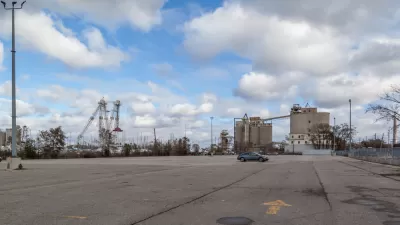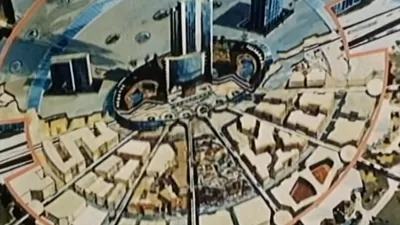The 'smart city' concept fails to take into account the necessary slowness of democracy and the unpredictability of a city's human inhabitants.

In an excerpt from her book A City is Not a Computer, author Shannon Mattern argues that the 'smart city' concept touted by Google's Sidewalk Labs and other technologists has not lived up to its promises, in part because the "move fast and break things" mentality typical of big tech runs up against the sometimes glacial pace of civic bureaucracy.
In an example from Toronto's Quayside project, the Sidewalk team "encountered, through the design process, the (often productive) slowness and friction of government bureaucracy and democratic deliberation." In the end, "[a]fter a long, messy process plagued by controversy over financing, governance, data privacy, and a host of other concerns, [CEO of Bloomberg LP Dan] Doctoroff took again to Sidewalk Talk in May 2020 to announce that the Quayside project was pulling the plug." According to local Sidewalk critic and public technology expert Bianca Wylie, "[w]hile the failure is certainly due in part to a changed world … this explanation brushes under the rug years of sustained public involvement in the project, from supporters and critics alike. From its inception, the project failed to appreciate the extent to which cities remain strongholds of democracy" and how the unpredictability of the human element makes it impossible to 'program' a city.
"[S]mart technologies often furnish convenient stopgap solutions; they provide a quick, and often lucrative, targeted fix that absolves leaders of the responsibility to investigate and resolve the root causes for health and racial injustices and systemic breakdowns." But while "Silicon Valley moves fast and breaks things," writes Mattern, "cities, if responsibly designed and administered, can’t afford such negligence—even if multiple converging crises seem to necessitate the rapid prototyping of urban solutions."
FULL STORY: Why high-profile smart cities fail, from Sidewalk’s Quayside to Amazon’s HQ2 in Queens

Study: Maui’s Plan to Convert Vacation Rentals to Long-Term Housing Could Cause Nearly $1 Billion Economic Loss
The plan would reduce visitor accommodation by 25,% resulting in 1,900 jobs lost.

North Texas Transit Leaders Tout Benefits of TOD for Growing Region
At a summit focused on transit-oriented development, policymakers discussed how North Texas’ expanded light rail system can serve as a tool for economic growth.

Why Should We Subsidize Public Transportation?
Many public transit agencies face financial stress due to rising costs, declining fare revenue, and declining subsidies. Transit advocates must provide a strong business case for increasing public transit funding.

How to Make US Trains Faster
Changes to boarding platforms and a switch to electric trains could improve U.S. passenger rail service without the added cost of high-speed rail.

Columbia’s Revitalized ‘Loop’ Is a Hub for Local Entrepreneurs
A focus on small businesses is helping a commercial corridor in Columbia, Missouri thrive.

Invasive Insect Threatens Minnesota’s Ash Forests
The Emerald Ash Borer is a rapidly spreading invasive pest threatening Minnesota’s ash trees, and homeowners are encouraged to plant diverse replacement species, avoid moving ash firewood, and monitor for signs of infestation.
Urban Design for Planners 1: Software Tools
This six-course series explores essential urban design concepts using open source software and equips planners with the tools they need to participate fully in the urban design process.
Planning for Universal Design
Learn the tools for implementing Universal Design in planning regulations.
Ascent Environmental
Borough of Carlisle
Institute for Housing and Urban Development Studies (IHS)
City of Grandview
Harvard GSD Executive Education
Toledo-Lucas County Plan Commissions
Salt Lake City
NYU Wagner Graduate School of Public Service




























